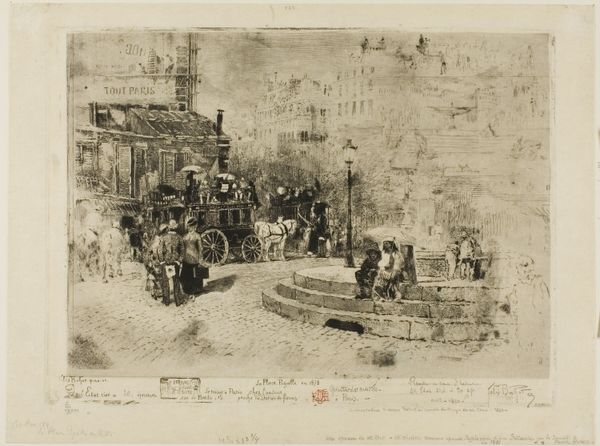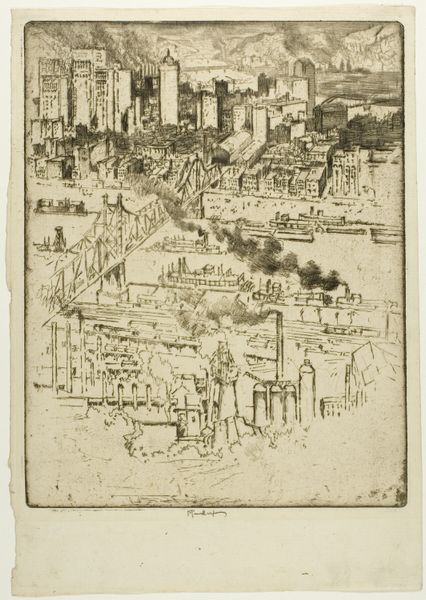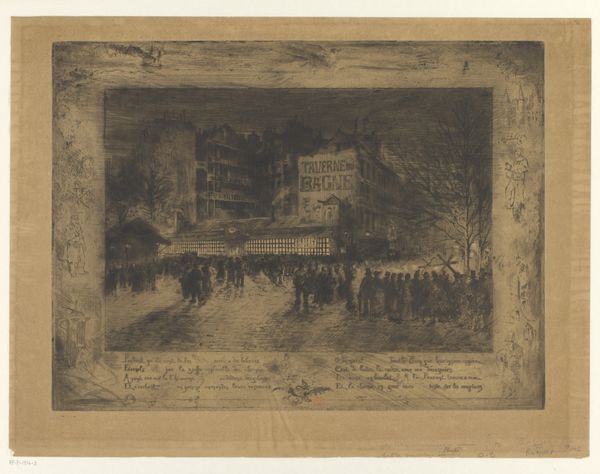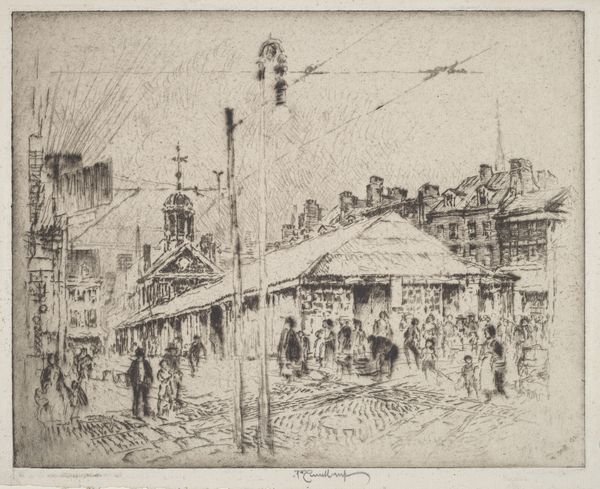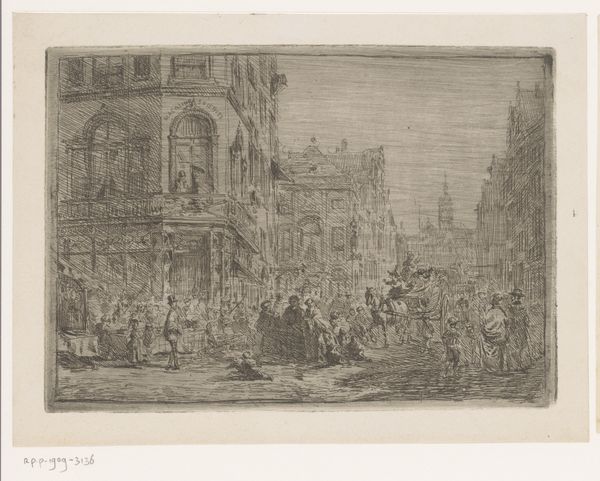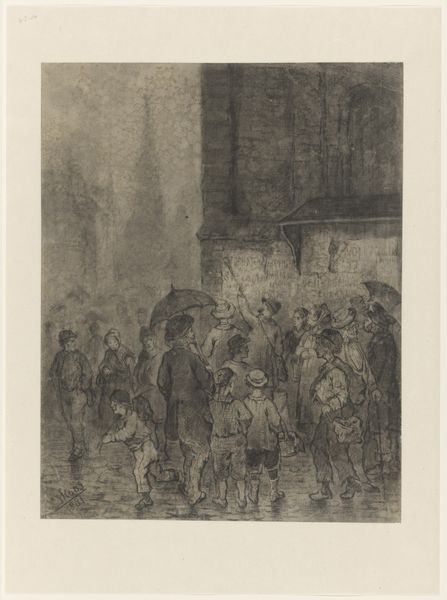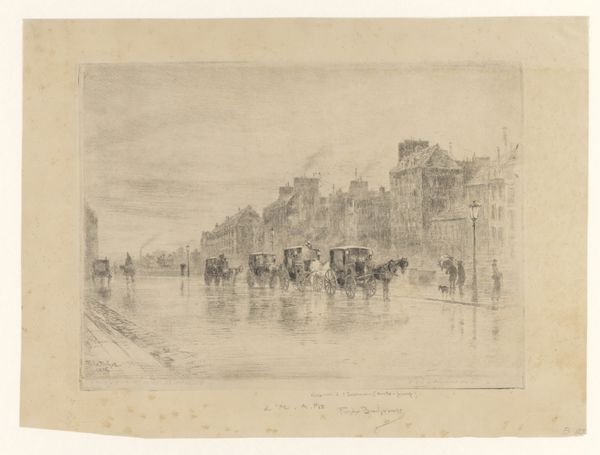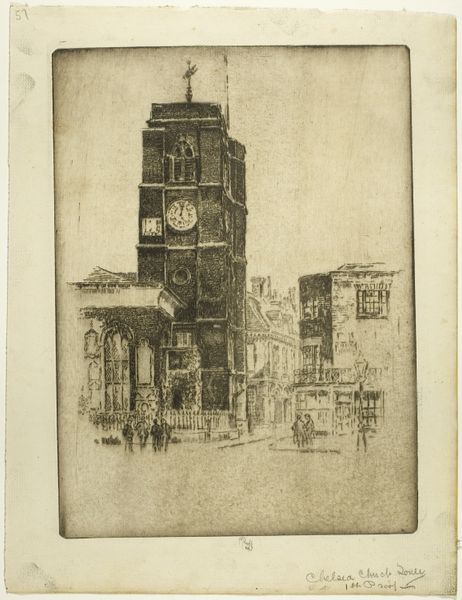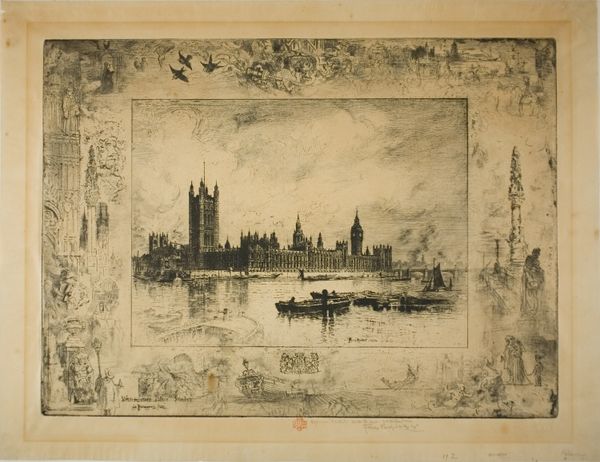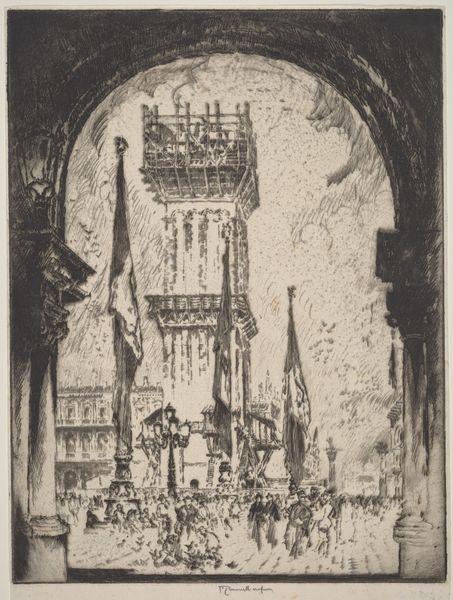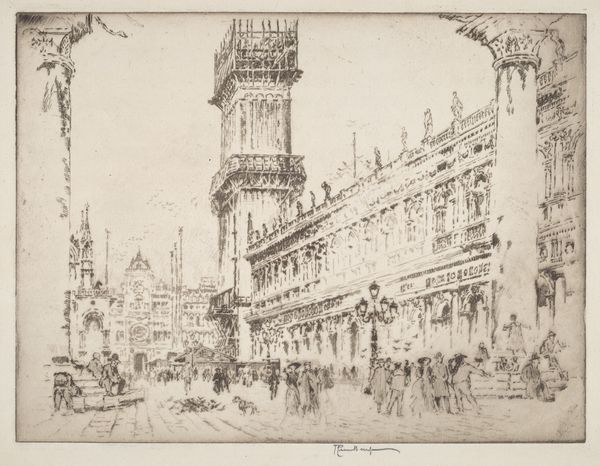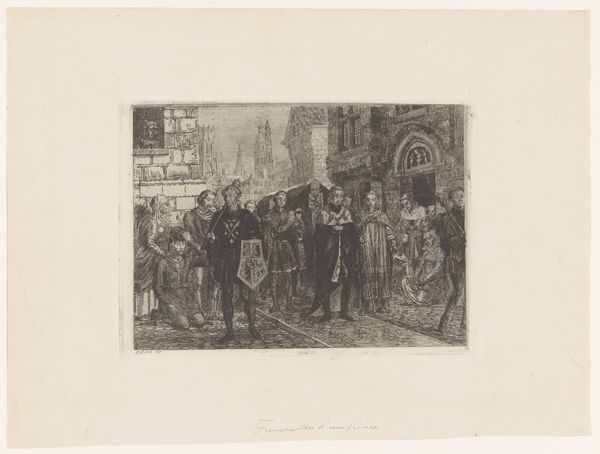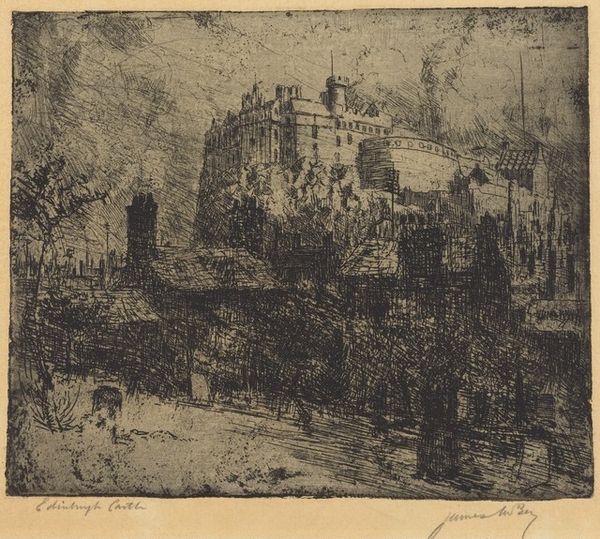
drawing, print, etching, paper
#
drawing
# print
#
impressionism
#
etching
#
landscape
#
paper
#
cityscape
Dimensions: 284 × 396 mm (plate); 310 × 432 mm (sheet)
Copyright: Public Domain
Editor: So, this is Félix Hilaire Buhot's "Westminster Clock Tower," made in 1884. It's an etching on paper, and the Art Institute of Chicago has it. I'm struck by how active the scene feels despite being rendered in such a limited palette. It really captures the hustle and bustle. What catches your eye when you look at this piece? Curator: Well, beyond the immediate impression, I’m interested in the process of etching itself. Consider the labour involved in creating this image – the physical act of incising the plate, the biting with acid. And what does this process *do* to the scene of London, already teeming with industrial production? Editor: What do you mean, "do to the scene?" Curator: The etching technique itself mimics, in a way, the very industrial processes it depicts. The clock tower, a symbol of mechanized time and labour, is rendered through a mechanized process. And even look at the borders he has created using etching; there's very little distinction between the border and the image itself, pointing to a relationship of material consumption within art itself. The cityscape bleeds into the margins, suggesting a world that cannot be easily framed or contained. How does this awareness change your reading of the print? Editor: It's like the materials themselves are echoing the themes within the art. I was so focused on the scene that I almost missed that. Curator: Exactly! Buhot isn't just showing us Westminster; he’s showing us the means by which Westminster comes to be known, to be consumed, as an image. The print becomes a commodity, circulating like the goods and people within the city. And look at the framing, suggesting different times of the day and year: what is he suggesting here with the means of production and constant cycle of image availability? Editor: It makes me think about how even landscapes, seemingly natural, are constructed and commodified through art and industry. It's definitely not just a pretty picture. Curator: Precisely. And it highlights the intricate connections between artistic creation, material production, and the ever-changing urban environment. Editor: I'll definitely be paying more attention to materials and the artistic process now.
Comments
No comments
Be the first to comment and join the conversation on the ultimate creative platform.
